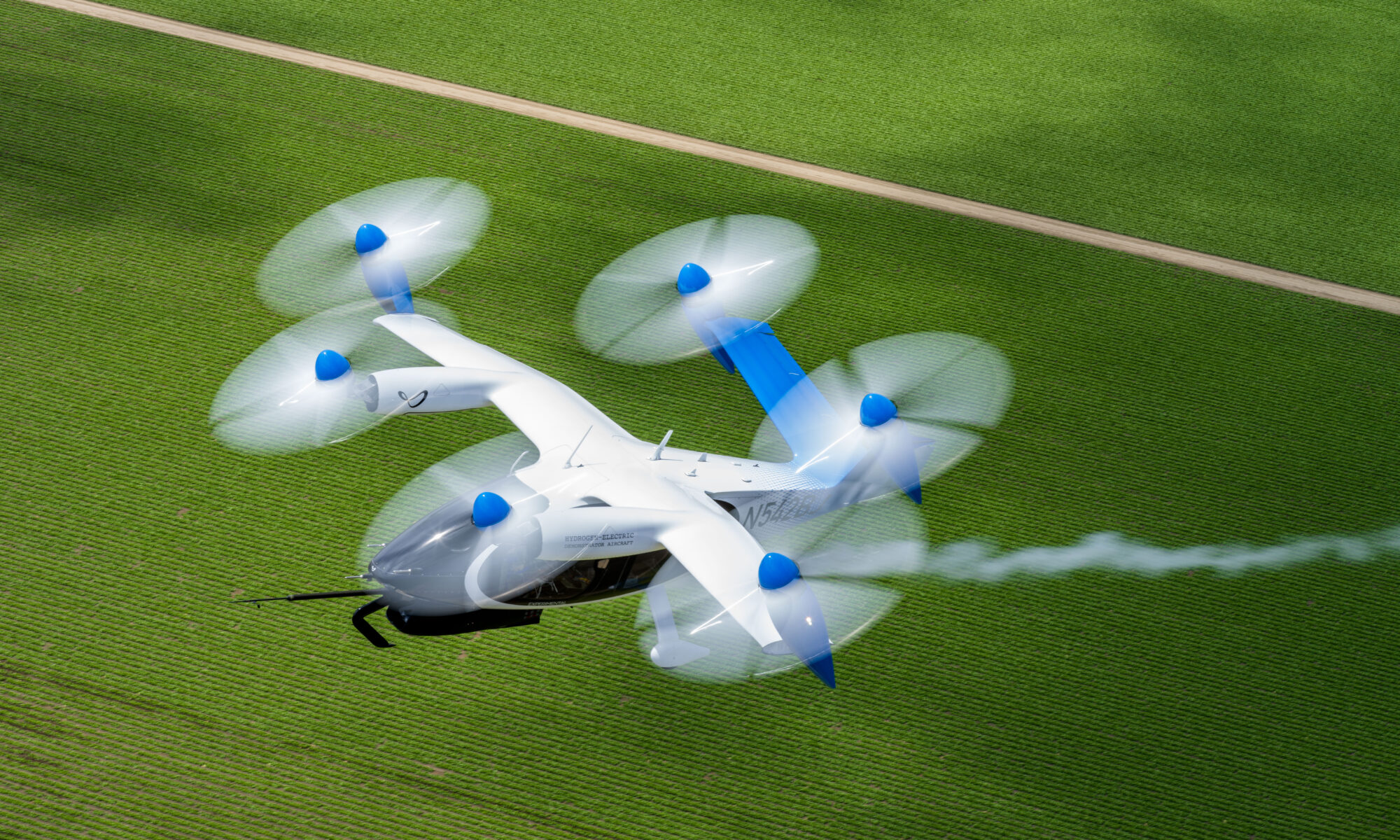Simplified flight controls have been on my mind of late. Triggered this week by a conversation with Nikita Ermoshkin, founder of Airhart, and past ones with various flight control engineers and pilots at Dassault, Embraer, and Gulfstream, translating aileron, elevator, and rudder input into a single joystick control won’t just be for bizjets and F35s.
Airhart began proving its model in a Van’s RV-12, and now a Sling E-LSA. Joby’s flight control system takes it a step further by incorporating VTOL flight requirements into a speed control (set it and forget it) and a side stick. Could creating an ease of flight for the average person finally make possible the increase in aircraft production necessary to reduce its overall cost? We’re quickly approaching this first transformational point.
At the same time, another sea change approaches. While Joby builds toward its first certificated eVTOL using electric motors and battery packs charged through currently available ground based sources (renewable or not), it is working concurrently on a hybrid-electric model fueled by liquid hydrogen. In fact, it flew one of its remotely piloted test articles (with a power system developed by H2FLY) in the vicinity of the Marina Airport in California for an eye popping 523 statute miles during a flight time of four hours, 47 minutes. The intention? To prove the viability of the next version for regional transportation, not just the 50-to-100-mile hops planned for the all-electric model.
“Rather than just connecting metropolitan areas, we’re able to connect between metropolitan areas,” said JoeBen Bevirt, founder and CEO of Joby, in a technology roundtable hosted by Joby virtually on July 17. “We think this is another game-changing technology.”
“It’s just a glimpse as to what the power of this platform is,” said Eric Allison, Joby’s chief product officer, in the same discussion.

Hydrogen-fueled flight compels in spite of the challenges to contain it because it is so energy dense, and leaves only water vapor behind. Putting this power into Joby’s platform would actually make possible the timeline for achieving net-zero carbon emissions in aviation by 2050. A second key element.
The third? The ability to bring these aircraft into our neighborhoods because of the substantial reduction in noise they produce as compared to a piston airplane, let alone a helicopter. Ever been surprised by a Tesla sneaking up on you? That’s the relative quiet of Joby’s first production model, based on both their objective noise reporting and my impression of it standing on the ramp at Marina about 100 feet away.
Ease of flight control. Hydrogen power. Big noise reduction. The intersection of these three elements lies just ahead, if Joby makes good on its efforts.
“I want to frame this moment in time as one of the most exciting times in aviation,” said Bevirt. I happen to agree.
Joby also recently announced plans for a large flight training facility in Watsonville, so I asked Bevirt and Allison: Is the plan to continue with the original piloted version to be first to market, with an autonomous version to follow, given the acquisition of the Xwing autonomous platform development business?
“We are laser-focused on bringing a piloted eVTOL aircraft to market, and are establishing pilot training facilities, curricula, and simulators to support the introduction of that aircraft to markets around the globe,” Joby’s team replied after the roundtable.
“Xwing’s comprehensive approach, and expertise in perception technology, system integration and certification, is expected to benefit both near-term piloted operations for Joby as well as fully autonomous operations in the future.“
Joby’s plan has long been to apply autonomous versions of its aircraft to the air taxi market once the concepts underpinning them are proven operationally. So the Xwing acquisition, along with the recent announcement of ElevateOS, Joby’s customer interface, feel timely.
We’re not quite ready for autonomous flight. But more than ever, we can see it from here.


